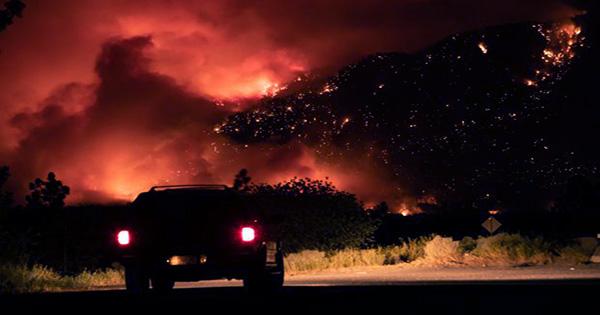The southern hemisphere is generally considered to be stormier than the northern hemisphere due to the presence of the Southern Ocean, which surrounds Antarctica and extends to the coastlines of South America, Africa, Australia, and the Antarctic Peninsula.
The Southern Hemisphere has long been known to harbor the world’s most terrifying storms, according to mariners who have traveled the globe. “The waves ran mountain-high and threatened to overwhelm the ship at every roll,” wrote one passenger on an 1849 voyage rounding the tip of South America.
Many years later, scientists poring over satellite data could finally put numbers behind sailors’ intuition: The Southern Hemisphere is indeed stormier than the Northern, by about 24%, in fact. But no one knew why.
Tiffany Shaw, a climate scientist at the University of Chicago, is the lead author of a new study that provides the first direct explanation for this phenomena. The vast mountain ranges in the Northern Hemisphere and ocean circulation were the two main offenders that Shaw and her colleagues identified.
The study also discovered that since the 1980s, when the satellite age first began, this storminess imbalance has grown. They discovered the increase was qualitatively in line with projections of climate change made by physics-based models.
‘A tale of two hemispheres’
For a long time, we didn’t know very much about the weather in the Southern Hemisphere: most of the ways we observe weather are land-based, and the Southern Hemisphere has much more ocean than the Northern Hemisphere does.
In contrast, we were able to measure how extreme the divergence was in the 1980s with the introduction of satellite-based worldwide observing. The jet stream is stronger and the weather events are more severe in the southern hemisphere.
One of the major threads in my research is to understand if models are giving us good information now so that we can trust what they say about the future. The stakes are high and it’s important to get the right answer for the right reason.
Tiffany Shaw
Thoughts had been shared, but no one had found a conclusive cause for this asymmetry. Shaw along with Osamu Miyawaki (PhD’22, now at the National Center for Atmospheric Research) and the University of Washington’s Aaron Donohoe had hypotheses from their own and other previous studies, but they wanted to take the next step. This required combining numerous lines of evidence from observations, theory, and physics-based climate simulations.
“You can’t put the Earth in a jar,” Shaw explained, “so instead we use climate models built on the laws of physics and run experiments to test our hypotheses.”
They applied a computerized simulation of Earth’s climate based on physical rules to replicate the data. They then measured the effects of each variable’s removal, one at a time, on storminess.
The first variable they tested was topography. There are more mountain ranges in the Northern Hemisphere, and large mountain ranges can impede air movement to lessen storms.
In fact, nearly half reduced the difference in storminess between the two hemispheres when the scientists levelled every peak on Earth.
The other half had to do with ocean circulation. Water circulates across the world in a manner akin to a very sluggish but potent conveyor belt: it descends in the Arctic, travels through the ocean’s floor, rises in Antarctica, and then flows up near the surface, carrying energy with it. The two hemispheres now have an energy differential. The other half of the variance in storminess vanished when the scientists attempted removing this conveyor belt.
Getting even stormier
After addressing the fundamental query of why the southern hemisphere experiences more storms, the researchers looked at how storminess has evolved over time.
They discovered that the storminess imbalance has grown over the satellite era, which started in the 1980s, by analyzing observations from previous decades. That is, whereas the average change in the Northern Hemisphere has been minimal, the Southern Hemisphere is becoming considerably more stormy.
The Southern Hemisphere storminess changes were connected to changes in the ocean. They discovered that the Northern Hemisphere also has a comparable ocean influence, but that this influence is cancelled out by the Northern Hemisphere’s increased solar absorption as a result of the melting of snow and sea ice.
The scientists checked the models and discovered that they were producing the same signals increasing storminess in the Southern Hemisphere and little change in the Northern that were used to assess the accuracy of these models as part of the Intergovernmental Panel on Climate Change assessment report.
Shaw said that the discipline of weather and climate physics is relatively young compared to many other fields, which may explain why such a seemingly straightforward topic of why one hemisphere is stormier than the other went unaddressed for so long.
It was only after World War II that scientists began to build models of the physics driving large-scale weather and climate (of which key contributions were made at the University of Chicago by Prof. Carl-Gustaf Rossby).
But predicting and comprehending what will occur as climate change accelerates depends on having a thorough grasp of the physical mechanisms underlying the climate and its response to changes induced by humans, such as those spelled out in this paper.
“By laying this foundation of understanding, we increase confidence in climate change projections and thereby help society better prepare for the impacts of climate change,” Shaw said. “One of the major threads in my research is to understand if models are giving us good information now so that we can trust what they say about the future. The stakes are high and it’s important to get the right answer for the right reason.”
















